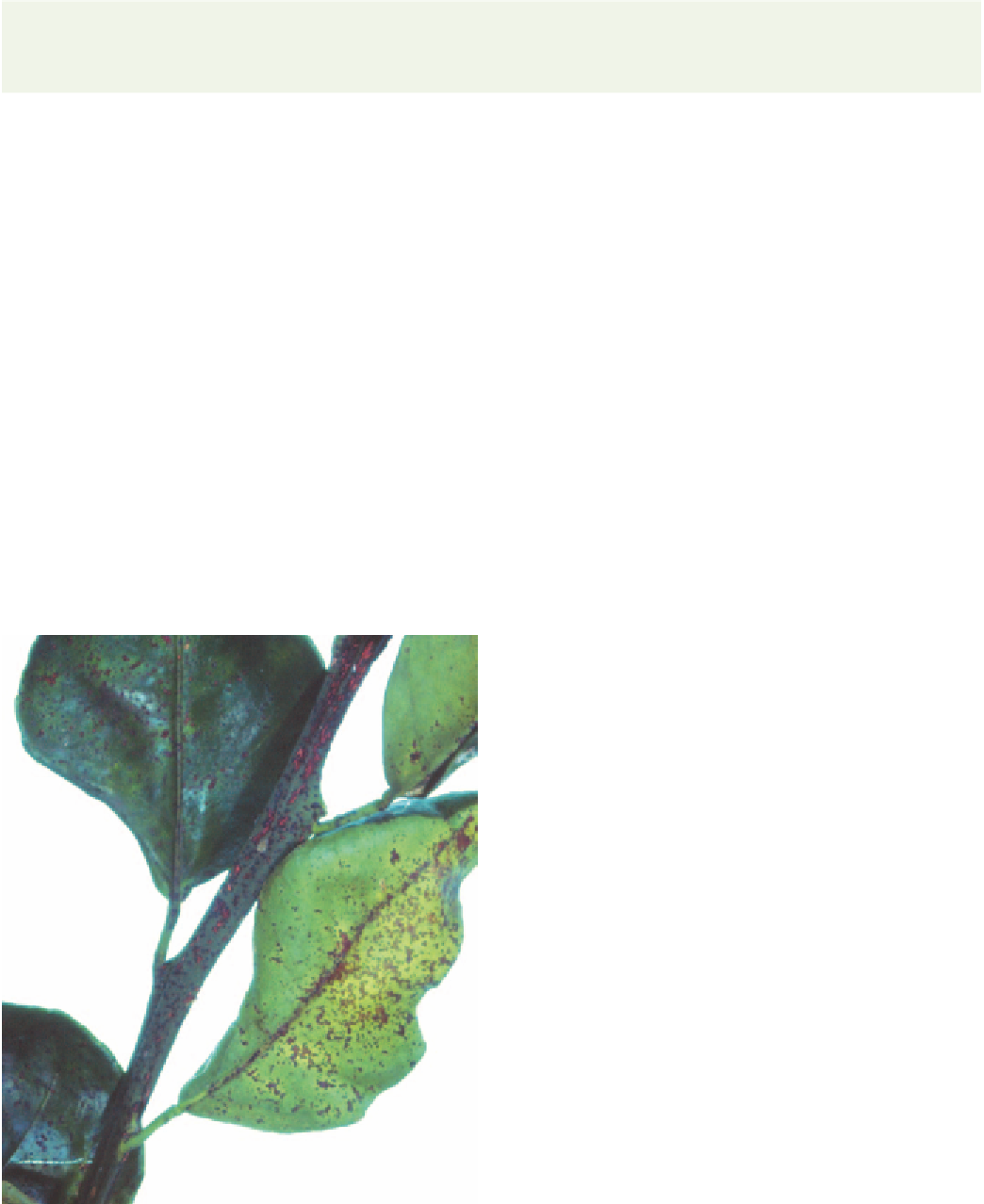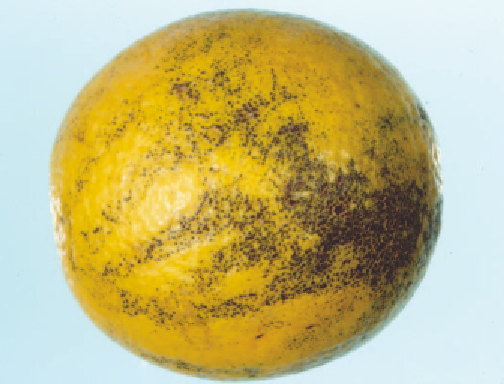Agriculture Reference
In-Depth Information
What to do if you suspect mal secco
This pathogen is a biosecurity risk to Australia. Any
suspected affected plants should be reported to the
nearest Department of Primary Industries or the Plant
Health Australia hotline (1800 084 881).
MELANOSE
■
Cause
The fungus
Diaporthe citri
(anamorph
Phomopsis citri
).
produce the symptom known as 'mudcake' melanose. The
mudcake symptom is generally the result of very high levels
of infection in young fruit; the same infection level in more
mature fruit generally results in the f flyspeck symptom.
Source of infection and spread
The fungus produces large numbers of spores on dead twigs
and branches. These are spread to adjacent leaves and fruit by
splashing and dripping water, hence the circular and tear-stain
patterns produced on fruit. Leaves and fruit are susceptible
to infection only when very young, with most fruit infection
occurring within three weeks of petal fall. Ideal conditions
for infection are 10-12 hours of leaf wetness at 25-30
Symptoms
Melanose affects fruit, leaves and twigs with symptoms
appearing five to seven days after infection. Reddish-brown
to black, raised pustules develop on young leaves and twigs,
and become rough to touch. Leaves may twist and fall
prematurely.
On fruit, minute, reddish-brown to black, raised spots
develop. These generally appear as 'f lyspecks' but are often
arranged in patterns such as circles and 'tear-stains'. The
tear-stain pattern results from spore-laden water f flowing
over the fruit in defined paths. Affected areas resemble
sandpaper and are rough to touch. Spots may be so dense
that a crust forms; this crust cracks as the fruit enlarges to
°
C.
Importance
Melanose is a cosmetic disease that is of major
importance in coastal areas with high rainfall, but of
minor importance in drier areas. It does not occur in
the arid inland citrus-growing regions of Australia.
The melanose fungus can also cause wood rot (e.g. see
crotch rot of Hickson mandarin).
Management
•
Spray with recommended registered fungicides when fruit
are highly susceptible, up to nine weeks after petal fall.
Prune dead twigs and branches before fl owering.
•
Fig 6.29 Melanose symptoms on a leaf and twig. Affected leaves
have a sand-papery feel.
Fig 6.30 Melanose symptoms on fruit. This fruit shows the tear stain
and mudcake symptoms.













